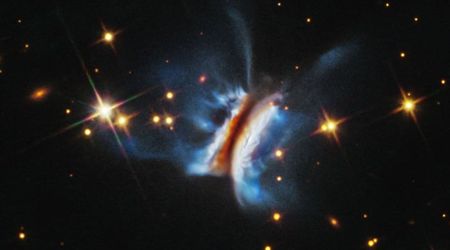M44 Open Cluster

M44, Praesepe, also popularly termed the Beehive Cluster, is one of the largest and brightest of all open star clusters. It is known from ancient times, but the actual nature of the cluster remained a mystery until the invention of the telescope in 1610.
When Galileo observed the Beehive through his primitive telescope, he realized with astonishment that the small nebulous object is in fact composed of myriads of small stars.
M44 is clearly visible to the naked eye as a misty patch, even from moderately light-polluted places. Finding it is pretty easy, the cluster is located just 1.5 degrees northwest of the 4th-magnitude star Delta Cancri.
Because of its great size covering 1.5 degrees of sky (or three times the apparent width of the full Moon), M44 is best seen with binoculars or rich-field telescopes. The cluster will be easily resolved into dozens of stars of magnitude 6.5 or fainter.
Several faint galaxies can be found between the stars of M44. However, they are only visible with large telescopes, as the best of them is no brighter than magnitude 14.5.
Note: The image featured at the tops of this article was taken by Bob Franke, NASA.gov.









